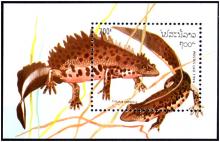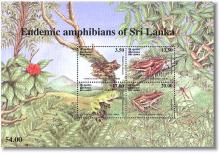Der Kammolch – eine gefährdete Amphibienart in der Verbandsgemeinde Asbach
In der gesamten Bundesrepublik wird seit Jahrzehnten ein stetiger Rückgang der Amphibienarten beobachtet, eine bedenkliche Entwicklung, bei der die Verbandsgemeinde Asbach keine Ausnahme macht. Auch bei uns sind sämtliche vorkommenden Amphibienarten bedroht, einige stehen kurz vor dem Aussterben, eine ehemals häufige Art ist bereits seit Jahrzehnten völlig verschwunden. Nach den Erhebungen des ANUAL wurden in den vergangenen Jahren 9 Amphibienarten als auf dem Gebiet der VG Asbach heimisch nachgewiesen, nämlich vier Froschlurcharten (Grasfrosch, Erdkröte, Geburtshelferkröte, Gelbbauchunke) und vier Schwanzlurcharten (Feuersalamander, Teichmolch, Bergmolch, Fadenmolch und Kammolch). Hinzu kommen Einzelfunde des Teichfrosches, die möglicherweise auf Populationen in Gartenteichen zurückgehen. Der Laubfrosch (Hyla arborea) soll bei uns vor Jahrzehnten ebenfalls heimisch gewesen sein, jetzt sucht man ihn allerdings im Freiland vergebens. Wie bereits gesagt, sind alle acht Arten stark gefährdet, aber bei drei von ihnen ist die Bestandssituation so schlecht, daß mit einem baldigen Aussterben gerechnet werden muß, wenn keine massiven Schutzmaßnahmen ergriffen werden. Bei diesen drei Arten handelt es sich um die Geburtshelferkröte (Alytes obstetricans), die Gelbbauchunke (Bombina variegata), und den Kammolch (Triturus cristatus). In der Verbandsgemeinde Asbach ist es bisher nur an einer einzigen Wasserstelle gelungen, Kammolche nachzuweisen. Es ist daher vorderste Aufgabe, dieses Gewässer zu schützen.










